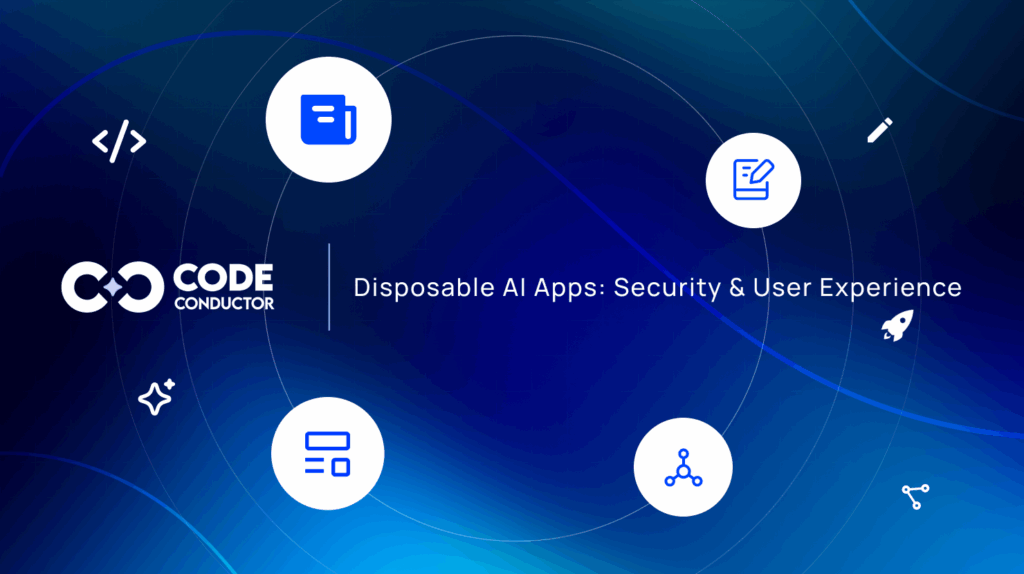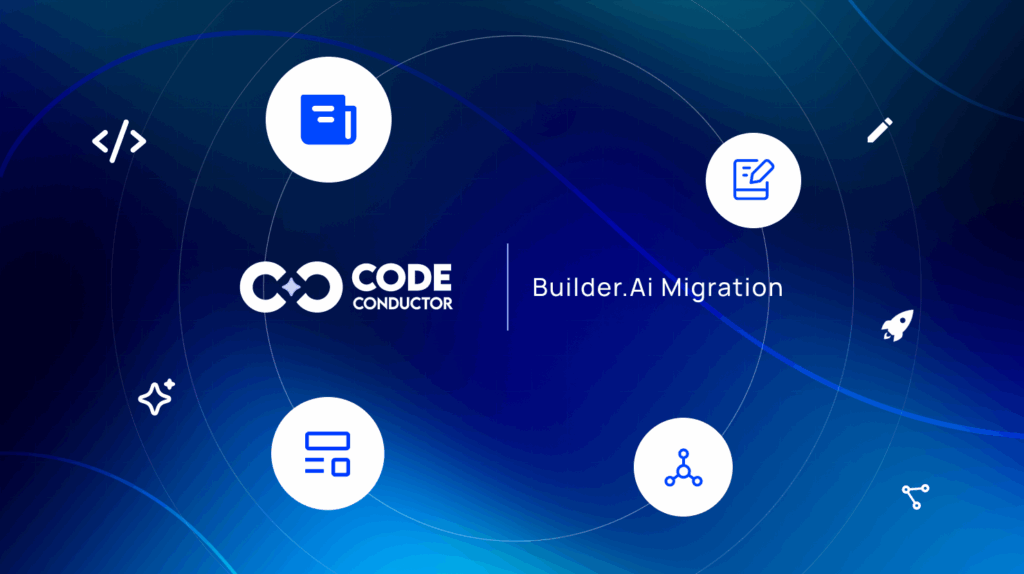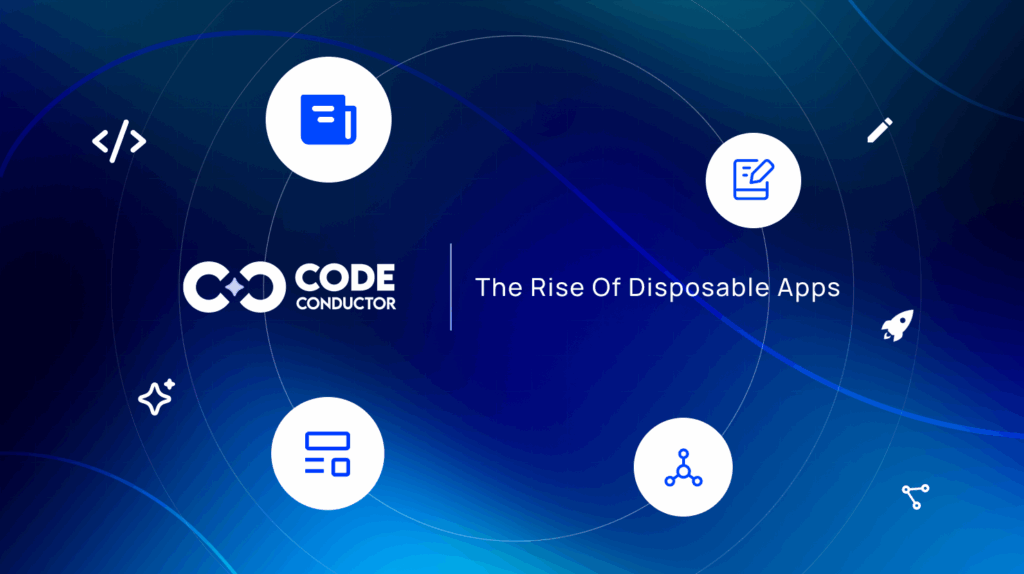Building AI inside the enterprise isn’t about wiring a chat prompt to a large language model. It’s about designing systems that can reason, remember, integrate, and scale within secure environments. The foundation matters as much as the model itself.
While many AI builders rely on lightweight orchestration layers, CodeConductor takes a deeper architectural path. It’s built on LangChain4j, a Java-native library that provides memory, retrieval-augmented generation, tool-calling, and structured outputs for production-grade AI.
This framework is not only open-source but also backed by Microsoft, whose partnership with the LangChain4j team focuses on secure, enterprise-grade AI through native integrations with Azure OpenAI, Azure AI Search, Cosmos DB, and Blob Storage. That collaboration, combined with Microsoft’s security audit and governance process, gives LangChain4j an enterprise pedigree few AI frameworks can match.
By using this foundation, CodeConductor bridges two worlds, the flexibility of modern AI orchestration and the compliance, observability, and reliability that global organizations demand.
In This Post
- What Is LangChain4j?
- How CodeConductor Uses LangChain4j?
- Why LangChain4j Is the Right Fit for the Enterprise?
- How This Architecture Powers Real Enterprise Use Cases?
- Future-Proofing Enterprise AI with CodeConductor + LangChain4j
- In a Nutshell: Why CodeConductor + LangChain4j Is the Right Move for Enterprises in 2025
- FAQs
What Is LangChain4j?
LangChain4j is an open-source Java library that brings large language model (LLM) capabilities directly into the Java applications. It gives developers and enterprises a structured way to build AI-powered agents, chat systems, and automation pipelines without leaving their existing frameworks such as Spring Boot, Quarkus, or Jakarta EE.
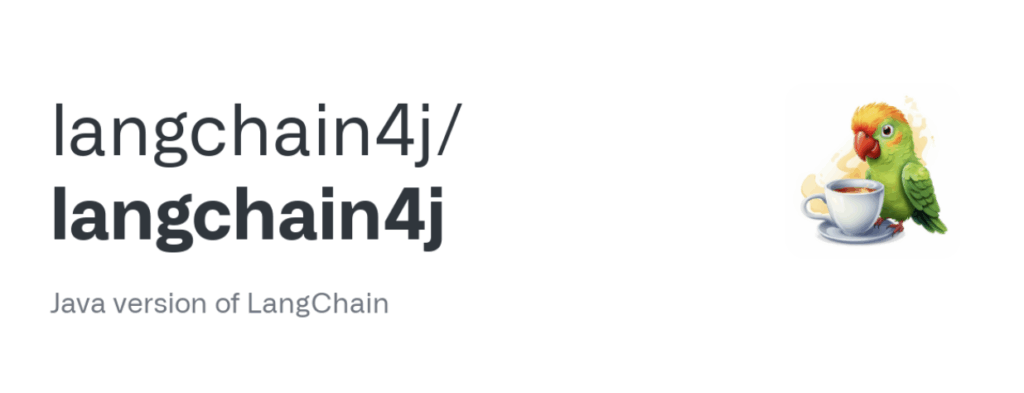
Unlike lightweight wrappers that only expose an API endpoint, LangChain4j provides a complete orchestration layer, linking models, memory, tools, and retrieval systems in a predictable and testable way.
Here’s what defines its architecture:
- Unified LLM Abstraction: Connects seamlessly to providers like OpenAI, Anthropic, and Azure OpenAI without code rewrites. Developers can switch models while preserving application logic.
- Memory and State Management: Enables persistent, context-aware conversations. Workflows can recall prior steps, store user inputs, and maintain continuity across sessions, crucial for enterprise assistants and internal bots.
- Retrieval-Augmented Generation (RAG): Integrates with vector databases (Pinecone, Qdrant, Milvus) and Azure AI Search to inject company-specific data into responses, improving factual accuracy
- Tool and Function Calling: Lets LLMs invoke business APIs, run calculations, or query databases. This bridges language understanding with real-world system actions.
- Structured Output Parsing: Returns typed Java objects (POJOs, lists, maps) instead of free text, ideal for enterprise workflows that require data validation and type safety.
- Enterprise-Grade Integration: Works out of the box with Java’s logging, monitoring, and security layers, allowing deployment in regulated or hybrid environments.
This framework’s maturity was reinforced by Microsoft’s 2025 partnership, which added native support for Azure OpenAI, Azure AI Search, Cosmos DB, and Blob Storage, alongside a full security audit and governance roadmap. That collaboration made LangChain4j the most trusted choice for enterprises that want cutting-edge AI without leaving the reliability of the Java world.
How CodeConductor Uses LangChain4j?
Most AI builders stop at rapid prototyping. CodeConductor goes further, it operationalizes AI inside real enterprise systems. Under the hood, it uses LangChain4j as the orchestration core that connects models, memory, and business logic within a secure, Java-based runtime.
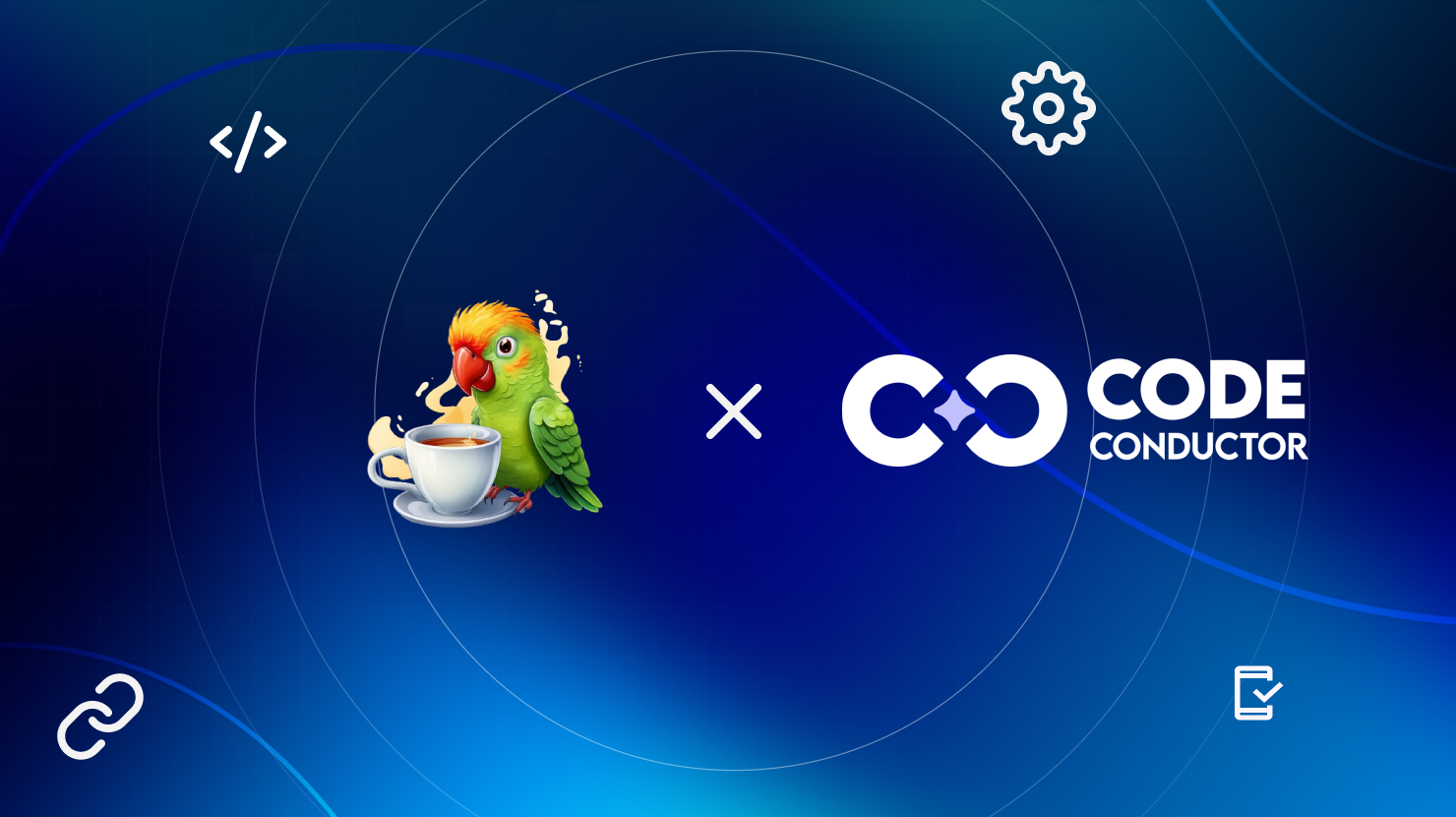
Here’s how this integration works step-by-step:
- Persistent Memory as a First-Class Feature: LangChain4j’s memory module allows CodeConductor workflows to retain context across sessions, users, and processes. This persistence powers multi-step tasks like employee onboarding, claims processing, or customer follow-ups, where every interaction matters.
- Multi-Model Orchestration: CodeConductor uses LangChain4j’s abstraction layer to support multiple model providers, OpenAI, Azure OpenAI, Anthropic, and local models, without locking users to a single vendor. Enterprises can mix text, image, or audio models within one workflow, ensuring flexibility and future scalability.
- Retrieval-Augmented Intelligence: Through LangChain4j’s RAG capabilities, CodeConductor connects AI agents to private knowledge bases, databases, and document stores such as Azure AI Search or Pinecone. This ensures responses are grounded in verified organizational data instead of generic model output.
- Tool-Calling for Real-World Action: LangChain4j’s function-calling framework allows AI agents to perform operations, not just generate text. In CodeConductor, this means automating internal workflows: querying a CRM, updating an order, or triggering an API call inside ERP systems, all within a controlled, auditable environment.
- Enterprise-Grade Deployment: Running natively on the Java stack, LangChain4j enables CodeConductor to deploy across cloud, hybrid, or on-prem infrastructures. Enterprises can maintain their existing CI/CD pipelines, identity providers, and security policies while integrating advanced AI capabilities.
- Visual Orchestration Layer: What LangChain4j provides in code, CodeConductor exposes visually. Users can drag, connect, and configure complex AI flows without writing a single line of Java, while the underlying execution engine enforces type safety, version control, and observability.
Together, this architecture transforms LangChain4j’s developer toolkit into an accessible, no-code enterprise platform. Developers gain control; business teams gain speed; and organizations gain a production-ready AI foundation that’s scalable, compliant, and future-proof.
Why LangChain4j Is the Right Fit for the Enterprise?
Enterprises adopting AI care less about experimental speed and more about trust, control, and longevity. LangChain4j meets those needs because it was built for production environments, not just prototypes. When combined with CodeConductor’s visual orchestration and deployment layer, it forms a foundation that fits naturally inside complex enterprise ecosystems.
- Built on Proven Java Reliability: Java powers critical systems across banking, healthcare, telecom, and manufacturing. LangChain4j extends that same reliability into AI by embedding LLMs and agents directly within Java frameworks such as Spring Boot, Quarkus, and Jakarta EE. This allows enterprises to adopt AI without abandoning their established tech stack or governance workflows.
- Security and Compliance by Design: LangChain4j underwent a Microsoft-led security audit that focused on dependency management, injection vulnerabilities, and code governance. That collaboration introduced a formal vulnerability disclosure process and enterprise-grade security policies. CodeConductor inherits this posture, ensuring every AI workflow runs inside a secure, auditable environment aligned with enterprise compliance standards.
- Seamless System Integration: Through retrieval-augmented generation (RAG) and tool-calling, LangChain4j allows CodeConductor workflows to connect directly with internal APIs, CRMs, ERPs, or data lakes, including Azure AI Search, Cosmos DB, and other cloud or on-prem databases. This means enterprises can augment AI reasoning with real company data while maintaining full control of access and visibility.
- Scalability and Stateful Workflows: LangChain4j’s memory modules enable CodeConductor to manage thousands of persistent, multi-turn sessions simultaneously. Whether powering an HR assistant that remembers each employee’s history or a support bot handling thousands of parallel conversations, the architecture remains performant and consistent across distributed environments.
- Flexibility and Vendor Neutrality: LangChain4j’s modular design supports multiple LLMs, OpenAI, Anthropic, Azure OpenAI, Mistral, or local deployments, so enterprises avoid vendor lock-in. CodeConductor users can switch providers as pricing, policies, or data-sovereignty needs evolve, all without re-architecting their applications.
- Governance and Observability Built In: Every model call, memory update, and tool invocation can be logged, versioned, and audited through existing Java telemetry systems. CodeConductor enhances this with visual monitoring dashboards and team-based permissions, giving CIOs and compliance teams full traceability of every AI decision path.
Together, LangChain4j and CodeConductor deliver what enterprises have long demanded from AI platforms: security, integration, accountability, and scalability, without sacrificing speed or innovation.
How This Architecture Powers Real Enterprise Use Cases?
LangChain4j gives CodeConductor a modular, composable foundation that goes beyond text generation. Together, they enable enterprise teams to design AI systems that act, recall, and comply within governed environments. Here’s what that looks like in practice:
- Intelligent Customer Support Assistants: By combining LangChain4j’s memory and retrieval modules, CodeConductor lets enterprises create support bots that recall conversation history and consult internal knowledge bases.Result: Agents deliver personalized answers grounded in CRM data or ticket records, while each response remains auditable for compliance.
- Automated Operational Workflows: Tool-calling lets AI agents act on systems directly. CodeConductor uses this to automate tasks such as creating purchase orders, rescheduling deliveries, or triggering alerts when KPIs deviate.Result: Routine operations run autonomously, reducing manual work and human error while staying within governed access boundaries.
- Knowledge Retrieval Dashboards: With LangChain4j’s RAG capabilities, CodeConductor builds natural-language interfaces on top of structured and unstructured enterprise data, whether stored in Azure AI Search, Cosmos DB, or local repositories.Result: Teams can query documents and databases instantly in plain language, receiving verified answers that cite internal sources.
- Secure On-Prem AI Deployments: For regulated sectors (finance, healthcare, public services), LangChain4j’s Java architecture lets CodeConductor run entirely on prem or in hybrid modes.Result: Data never leaves the organization’s network, and enterprises retain control over identity management and audit logs.
- No-Code AI Builders for Internal Teams: Business users can build assistants or automations without writing Java code, while LangChain4j handles model invocations, memory, and security behind the scenes.Result: AI development is democratized across departments without sacrificing governance or reliability.
- Enterprise-Proven Stability: Microsoft reports that hundreds of customers are already running LangChain4j in production. By building on this foundation, CodeConductor delivers enterprise-tested scalability with the added benefit of visual workflow design and deployment control.
Future-Proofing Enterprise AI with CodeConductor + LangChain4j
AI frameworks come and go, but enterprise software lifecycles last years. The CodeConductor + LangChain4j stack is built to endure that gap, offering a modular, adaptable foundation that evolves with new models, tools, and compliance standards.
- Model-Agnostic Architecture: LangChain4j abstracts model providers, so CodeConductor can switch between OpenAI, Anthropic, Azure OpenAI, Mistral, or on-prem LLMs without code refactoring.Outcome: Enterprises stay agile as vendors, costs, or privacy rules change.
- Flexible Data & Vector Stores: The framework supports Pinecone, Qdrant, Milvus, and Azure AI Search, allowing CodeConductor workflows to integrate with whichever retrieval layer best fits current data strategies.Outcome: Future migrations or analytics upgrades happen with zero workflow disruption.
- Extensible Tooling and Automation: LangChain4j’s tool-calling interface allows teams to continuously expand what their AI systems can do, adding new API endpoints, RPA actions, or analytics processes.CodeConductor builds on this by enabling teams to define these capabilities through prompt-based configurations. Instead of dragging components, users describe the desired automation in natural language, and CodeConductor generates the underlying LangChain4j logic automatically.Outcome: Each new integration or function becomes a reusable prompt pattern that can be invoked, modified, or extended across enterprise workflows, without manual coding.
- Multi-Modal Readiness: LangChain4j already handles text, image, and audio models. CodeConductor builds on this by orchestrating mixed-media workflows such as document understanding or voice-enabled assistants.Outcome: Enterprises can deploy next-generation, multimodal AI without redesigning their infrastructure.
- Long-Term Vendor Support and Governance: The Microsoft–LangChain4j partnership ensures continuous security reviews, Azure-native integrations, and roadmap stability.Outcome: CodeConductor customers benefit from an ecosystem backed by two active developer communities, open-source and enterprise cloud.
Together, these capabilities turn CodeConductor + LangChain4j into more than an integration, it’s a future-ready platform that adapts as the AI landscape matures while keeping governance, compliance, and control in enterprise hands.
In a Nutshell: Why CodeConductor + LangChain4j Is the Right Move for Enterprises in 2025
If your goal is to experiment with prompts, there are many tools to help you do so.
If your mission is to deploy AI that lasts, with memory, governance, integrations, and scale, you need a stronger backbone.
That’s where this pairing stands apart.
LangChain4j brings a production-grade Java framework with persistent memory, structured outputs, and RAG integrations.
Microsoft’s partnership validates its enterprise security, audits, and Azure-native readiness.
CodeConductor layers a visual, no-code interface that transforms those capabilities into deployable, team-ready workflows.
Together, they create an architecture that:
- Runs anywhere cloud, hybrid, or on-prem.
- Integrates everywhere APIs, databases, and data lakes.
- Scales responsibly with observability, logging, and governance built in.
LangChain4j provides the architecture.
Microsoft ensures the trust.
CodeConductor turns it into a platform teams can build on today, and evolve with tomorrow.
Ready to design AI systems that think, act, and scale responsibly?
Start building with CodeConductor and future-proof your enterprise AI stack.
FAQs
What is LangChain4j used for?
LangChain4j is a Java library that integrates large language models, memory, retrieval, and tool-calling within existing Java apps. It helps enterprises build reliable AI assistants and automation workflows without leaving their Java infrastructure.
How does CodeConductor use LangChain4j?
CodeConductor runs LangChain4j at its core to orchestrate models, maintain long-term memory, perform retrieval-augmented queries, and connect with enterprise APIs. It then exposes these capabilities visually for no-code workflow design.
Is LangChain4j secure?
Yes. Microsoft partnered with LangChain4j in 2025 to perform full dependency and injection vulnerability audits, establishing a transparent governance and disclosure process that strengthens enterprise trust.

Founder CodeConductor



